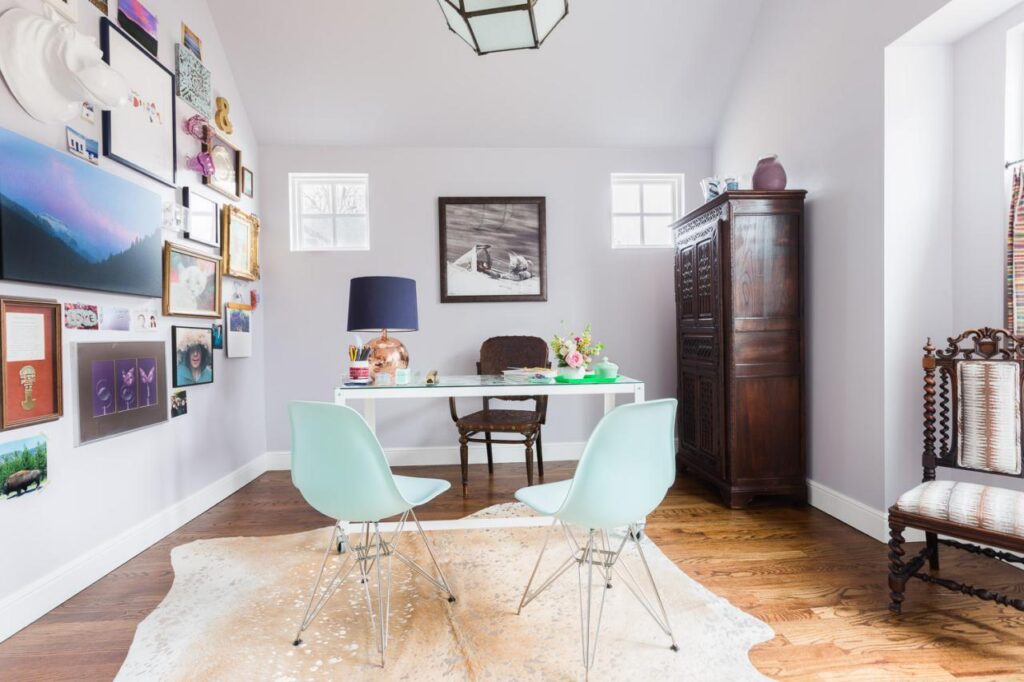Whether your home office is an allocated area for operating a business, your remote workstation, or merely a nook for filing bills and arranging your calendar, you deserve more than a metal desk and an extra chair in a spare corner. Why?
An office that matches the style and comfort of the rest of your house is a location where you’ll want to work late.
- It’s All About The Location
Don’t skimp on space in your home office because you’ll be spending a lot of time there (e.g. squishing a tiny desk into a windowless closet to preserve the rarely-used guest room).
Consider the flow of traffic and your capacity to stay focused in the face of distractions. Do you want to work in a bustling environment, or should your office be tucked away in a quiet corner? If you expect clients to drop by, you’ll need a secluded area with plenty of seats.
- Don’t Make The Mistake Of Sacrificing Form For Function.
Your home office accessories should work for you, not against you. Before you buy furniture, think about your workflow and what you need at your fingertips, and then seek pieces that are both attractive and useful.
Instead of shouting “soulless cube,” home office furniture should match other spaces in your home. Warm wood and soft, comfortable seats or a couch are great for a classic house if you have a room. Artistic items or trendy metal furniture can be used in a contemporary home office.
- Make An Investment In A Fantastic Chair.
You sit on your office chair for hours; an attractive, ergonomically correct, and the comfy seat is well worth the money. According to research, a comfortable chair is essential to enhance productivity.
- Choose A Colour That You Like For The Walls.
Forget “office beige.” A bright, cheerful shade like orange or lime green is the answer. Others require a soothing colour like botanical green or seafoam blue. Learn more about how different colours may influence your mood.
- Take A Look At Yourself.
When you look up from your computer, place the desk so you can look at anything other than a blank wall (even if you like the colour). Natural light from a window is best, but hang a lovely picture over the desk or turn your chair to face the entrance if you don’t have one.
- Accessorise with Cozy Accessories
Choose home office accessories that improve the comfortable atmosphere of your home offices, such as a gorgeous mug for a pencil holder, fashionable notepads and sticky notes, and a colourful wastebasket, unless you’re looking for a modern appearance.
Wrap a beautiful fabric around your bulletin board, and conceal practical bookshelves behind drapes made of the same material. Whether your kids’ framed artwork or a famous painting, hang encouraging posters on the walls.
- Take Control of Your Technology
You can’t do much to make the computer, printer, or phone seem more likable, but you can cover unsightly wires. First, make sure your equipment is accessible to outlets and easy to disconnect if necessary.
Put a fabric cable cover on the desk and feed the cords through a desk grommet, a plastic or metal cap that helps guide cords through a hole in the desk and hides them beneath. Cord winders, tubing, or a wire organiser affixed to the desk that elevates the wires off the floor can help tame the cord jungle on the floor.
Wrapping Up
It’s not simple to design a home office. Because if anything goes wrong, you don’t just see it; you feel it—every weekday from 9 a.m. to 5 p.m. An excellent home office is cosy enough to spend the entire day in, minimalist sufficient to keep you focused, and exciting enough to spark your imagination.
